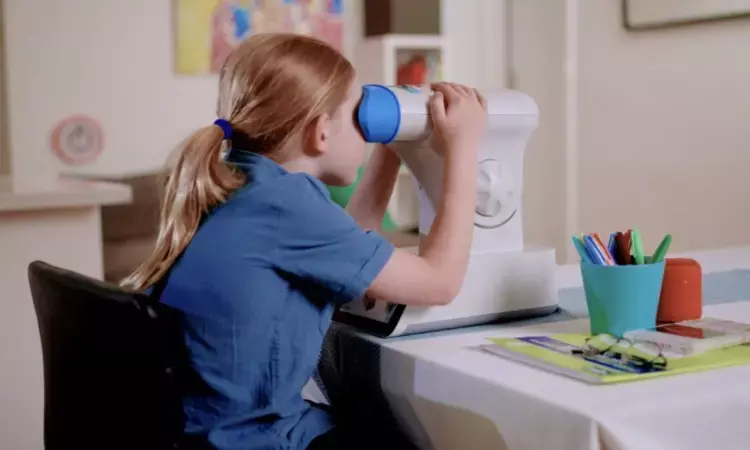- Home
- Medical news & Guidelines
- Anesthesiology
- Cardiology and CTVS
- Critical Care
- Dentistry
- Dermatology
- Diabetes and Endocrinology
- ENT
- Gastroenterology
- Medicine
- Nephrology
- Neurology
- Obstretics-Gynaecology
- Oncology
- Ophthalmology
- Orthopaedics
- Pediatrics-Neonatology
- Psychiatry
- Pulmonology
- Radiology
- Surgery
- Urology
- Laboratory Medicine
- Diet
- Nursing
- Paramedical
- Physiotherapy
- Health news
- Fact Check
- Bone Health Fact Check
- Brain Health Fact Check
- Cancer Related Fact Check
- Child Care Fact Check
- Dental and oral health fact check
- Diabetes and metabolic health fact check
- Diet and Nutrition Fact Check
- Eye and ENT Care Fact Check
- Fitness fact check
- Gut health fact check
- Heart health fact check
- Kidney health fact check
- Medical education fact check
- Men's health fact check
- Respiratory fact check
- Skin and hair care fact check
- Vaccine and Immunization fact check
- Women's health fact check
- AYUSH
- State News
- Andaman and Nicobar Islands
- Andhra Pradesh
- Arunachal Pradesh
- Assam
- Bihar
- Chandigarh
- Chattisgarh
- Dadra and Nagar Haveli
- Daman and Diu
- Delhi
- Goa
- Gujarat
- Haryana
- Himachal Pradesh
- Jammu & Kashmir
- Jharkhand
- Karnataka
- Kerala
- Ladakh
- Lakshadweep
- Madhya Pradesh
- Maharashtra
- Manipur
- Meghalaya
- Mizoram
- Nagaland
- Odisha
- Puducherry
- Punjab
- Rajasthan
- Sikkim
- Tamil Nadu
- Telangana
- Tripura
- Uttar Pradesh
- Uttrakhand
- West Bengal
- Medical Education
- Industry
Can red light be used for myopia control in children? Study sheds light

USA: Exposure to long-wavelength light has been suggested as a potential intervention to slow childhood myopia progression.
A recent article published in Optometry and Vision Science provides an evidence-based review of the red light's safety and myopia control efficacy and discusses the potential mechanisms through which red light may work to slow myopia progression in children. Myopia (nearsightedness) is a common vision problem that often begins between 6 to 14 years of age. It is the most common of the refractive error seen in children.
The review by Aaron Salzano, Pacific University College of Optometry, Forest Grove, Oregon (ADS), and colleagues summarized the findings of current studies on repeated low-level red-light therapy and suggested areas for further research. It discusses the effects of this therapy on refractive error, axial length, choroidal thickness, and the potential for a rebound effect. Possible mechanisms underlying these therapeutic effects are proposed.
The spectral composition of the ambient light in the visual environment has a powerful impact on eye growth and refractive development. Studies in mammalian and primate animal models (tree shrews and macaque monkeys) have related that daily exposure to long wavelength (amber or red) light promotes slower eye growth and hyperopia development and inhibits myopia induced by minus lens wear or form deprivation.
Consistent with these results, several recent randomized controlled clinical trials in Chinese children have shown that red light exposure for three minutes twice a day significantly reduces myopia progression and axial elongation.
Collectively, these findings provided strong evidence for the potential of red light use as a myopia control intervention in clinical practice. However, several questions still need to be answered.
"In this article, we review the current evidence on the efficacy and safety of red light as a myopia control intervention, describe potential mechanisms, and discuss some key unresolved issues that need consideration before red light can be broadly translated into myopia control in children," the researchers wrote.
Reference:
Salzano, Aaron D. OD, FAAO; Khanal, Safal OD, PhD, FAAO; Cheung, Nathan L. OD, FAAO; Weise, Katherine K. OD, MBA, FAAO; Jenewein, Erin C. OD, FAAO; Horn, Darryl M. PhD, FAAO; Mutti, Donald O. OD, PhD, FAAO; Gawne, Timothy J. PhD, FAAO. Repeated Low-level Red-light Therapy: The Next Wave in Myopia Management?. Optometry and Vision Science ():10.1097/OPX.0000000000002083, October 25, 2023. | DOI: 10.1097/OPX.0000000000002083
Dr Kamal Kant Kohli-MBBS, DTCD- a chest specialist with more than 30 years of practice and a flair for writing clinical articles, Dr Kamal Kant Kohli joined Medical Dialogues as a Chief Editor of Medical News. Besides writing articles, as an editor, he proofreads and verifies all the medical content published on Medical Dialogues including those coming from journals, studies,medical conferences,guidelines etc. Email: drkohli@medicaldialogues.in. Contact no. 011-43720751


